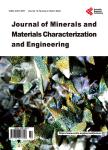Effect of Surface Treatment on Tribological Behavior of Ti-6Al-4V Implant Alloy
Effect of Surface Treatment on Tribological Behavior of Ti-6Al-4V Implant Alloy作者机构:Department of Mechanical Engineering College of Engineering (Autonomous). Andhra University Visakhapatnam India Department of Mechanical Engineering L. B. R. College of Engineering Mylavaram Vijayawada. A.P. India
出 版 物:《Journal of Minerals and Materials Characterization and Engineering》 (矿物质和材料特性和工程(英文))
年 卷 期:2012年第11卷第7期
页 面:735-743页
学科分类:1002[医学-临床医学] 100214[医学-肿瘤学] 10[医学]
主 题:Heat Treatment Shotpeening Wear Resistance Sliding Velocity
摘 要:Titanium alloys are extensively used in various fields of engineering, medicine, aerospace, marine due to its excellent mechanical properties. Its usage is more pronounced today in the field of biomedical implants due to its superior bio-compatibility, corrosive resistance and high strength to weight ratio. It has poor abrasive wear resistance due to high coefficient of friction and low thermal conductivity. Poor abrasive wear resistance results in the formation of wear debris at the implant area causing toxicity, inflammation and pain .Surface treatment of the implant alloy through heat treatment, application of protective coatings, introduction of compressive residual stresses by shotpeening and shot blasting are some of the methods to mitigate wear of the implant alloy. In this work Ti-6Al-4V implant alloy is treated under various conditions of heat treatment, shotpeening and shot blasting operations on a pin on disc wear testing machine. Shotpeening and Shot blasting are the operations usually performed on this alloy to improve fatigue strength and surface roughness. In this work the effect of above surface treatments were studied on the wear behavior of Ti-6Al-4V implant alloy and an improvement in the wear resistance of the alloy is reported. Scanning Electron micrograph (SEM) along with Energy Dispersive Spectrometry analysis (EDS) is done to authenticate the experimental results obtained during the wear testing procedure.



